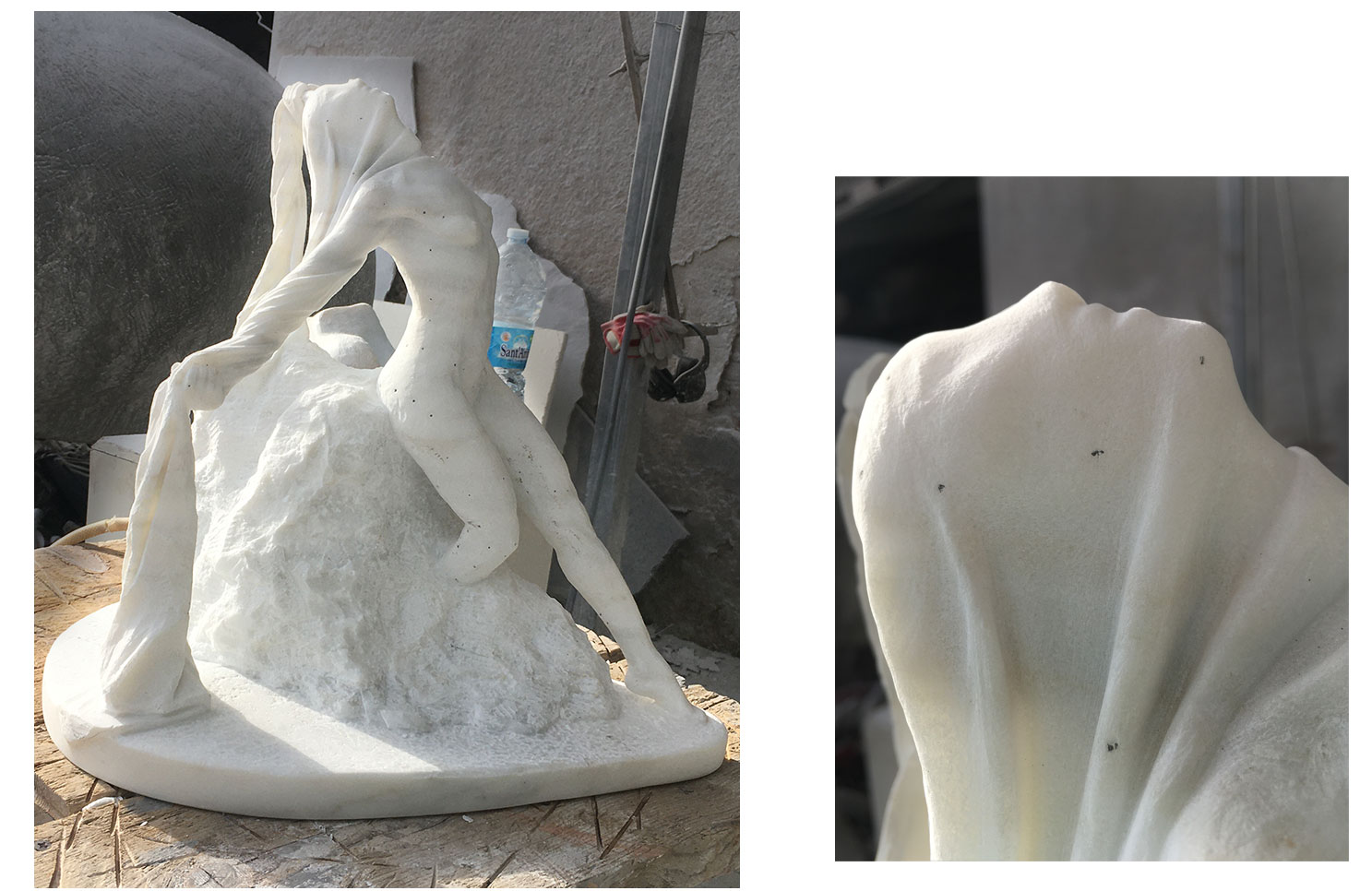PROCESS:
MARBLE
Carving stone is different to sculpting in clay. With clay layers of material are built up that can be altered and adjusted or cut away and replaced. When carving, you are bound by the material and whatever you do to it is a permanent change. There is no going back if you make a mistake or if the stone is flawed; you either incorporate the change into your art or abandon your work. It is my favourite medium to work in.
There are infinite ways to produce work in stone. Many of the same methods, that have been used for thousands of years, are still in use today. Of course, there have been some considerable advances in technology, over the intervening centuries. However, these are mostly employed in the early stages of carving. The fine detail, the finishing and the polishing process is all still done the same way it has always been done; by hand.
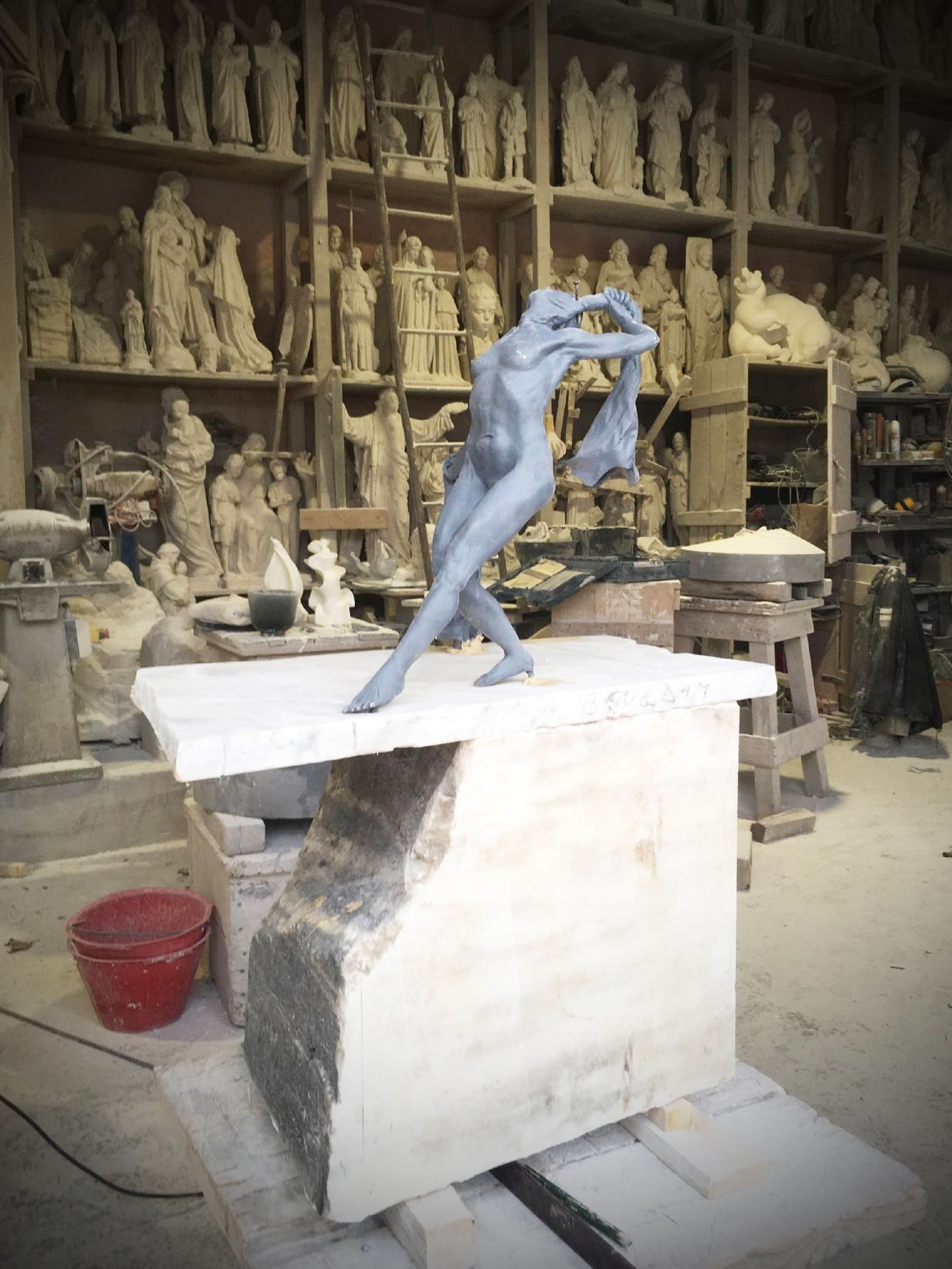
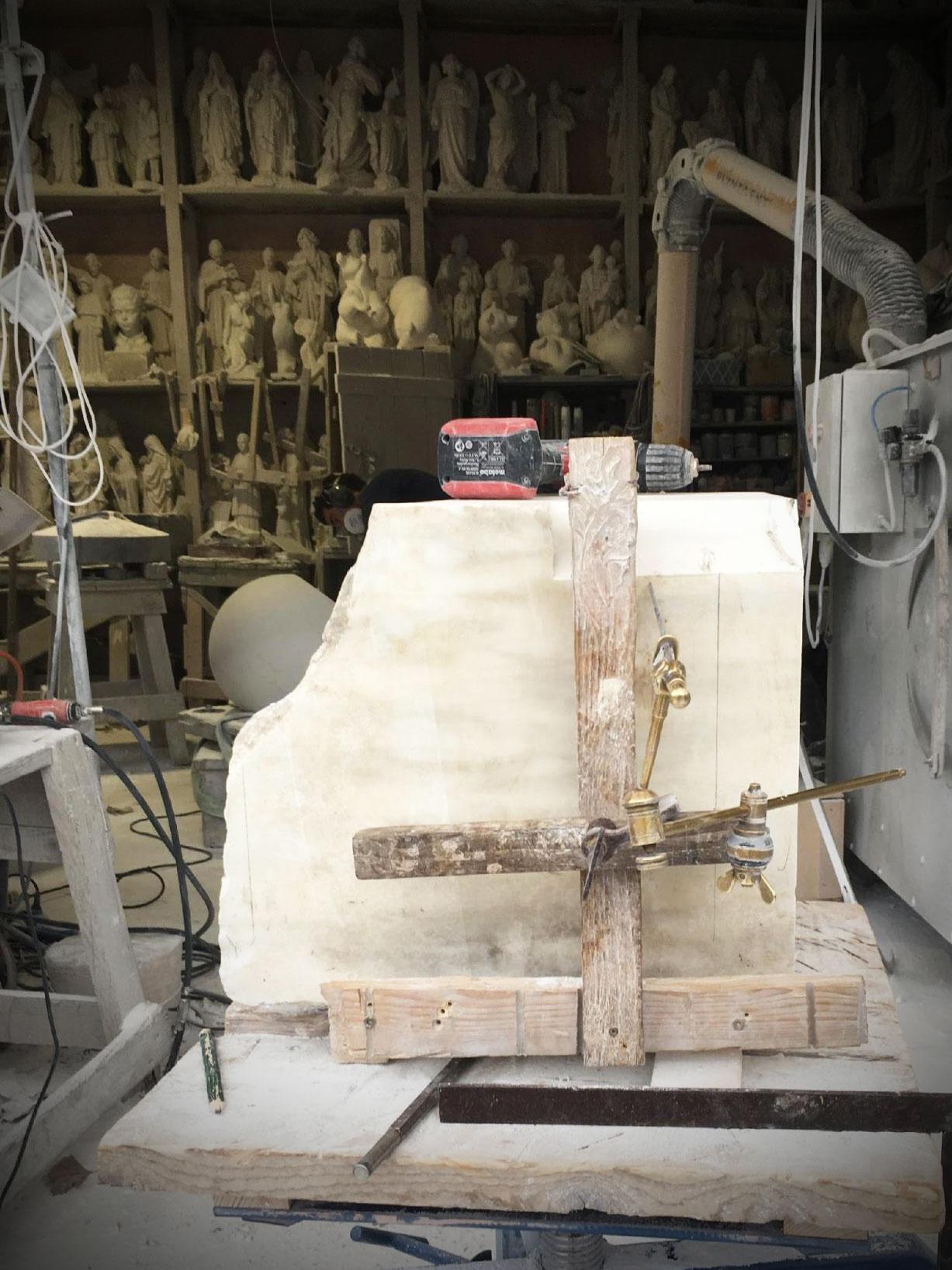
It would be impossible to sum up the different ways of producing sculpture from stone, in only a few words. The use of a Macchinetta per Punti, is one way to make a direct replica of a piece of art.
While plaster is the more common material to make the host figure in, we used resin to make a copy of Emergence. This was made using the moulds from the bronze cast. The piece was then measured, and the extreme edges marked onto a piece of stone. Emergence is carved from Crema Delicato.
To accurately mark the points, between the two versions of the figure, a ‘cross’ is made from scraps of wood, to fit the stone and the sculpture. The cross is the fixed point between the two sculptures, always returning to the same prescribed place on each figure, every time a point is transferred.
When the Macchinetta is attached to the cross, it acts like 3 Dimensional callipers, to measure the dimensions of the sculpture. The needle is used to take a point on the surface of the host sculpture and with the needle fixed in place, the cross is then transferred to the stone. The needle will be pushed out by the stone, by how much indicates how much material needs to be carved away. The excess stone that ‘buries’ the point is then cut away with chisels, or grinders. When the needle can eventually be pushed back to its original place, a small mark is made on the stone; this identifies that the stone is now the same dimension as the equivalent point on the host figure.
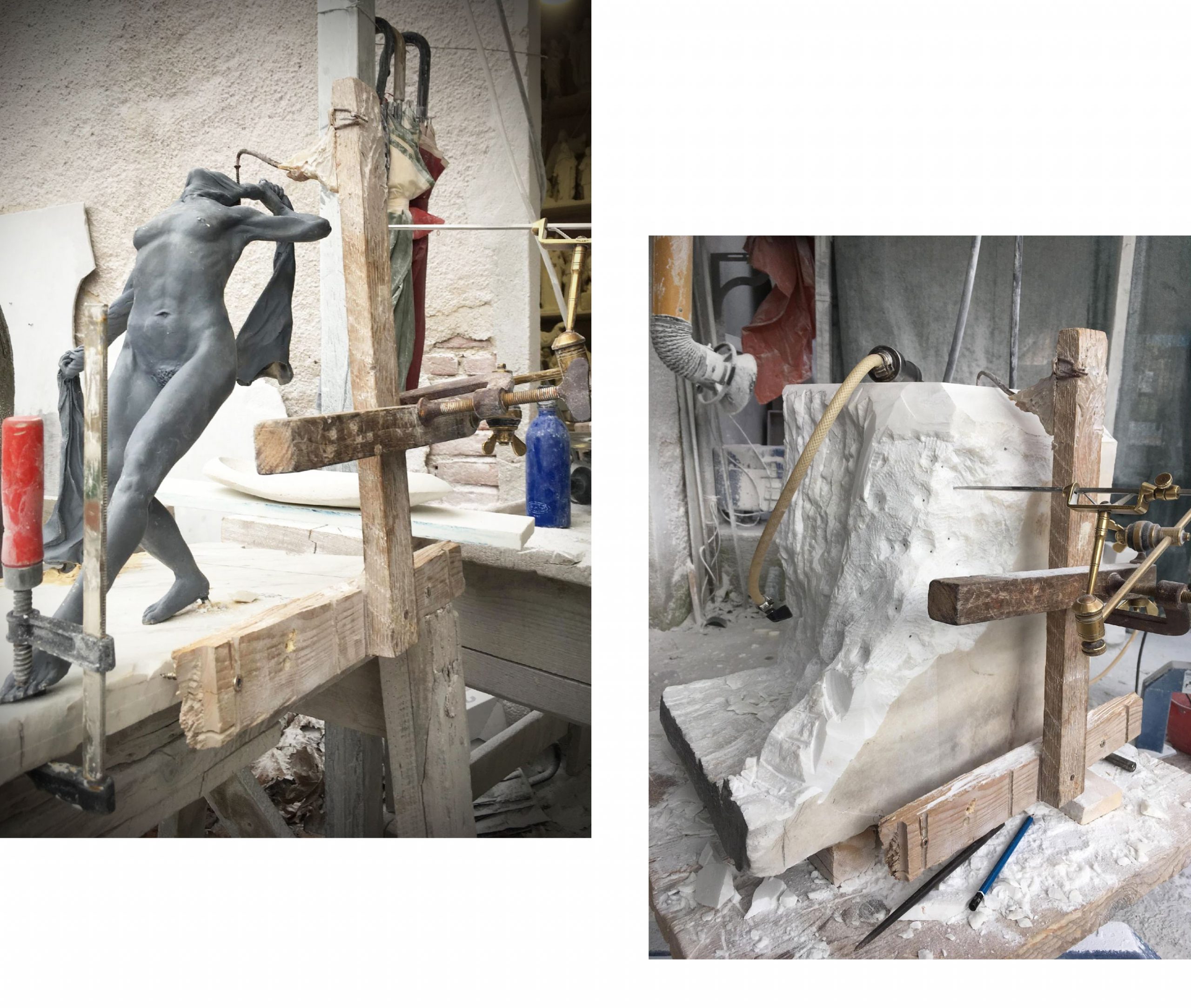
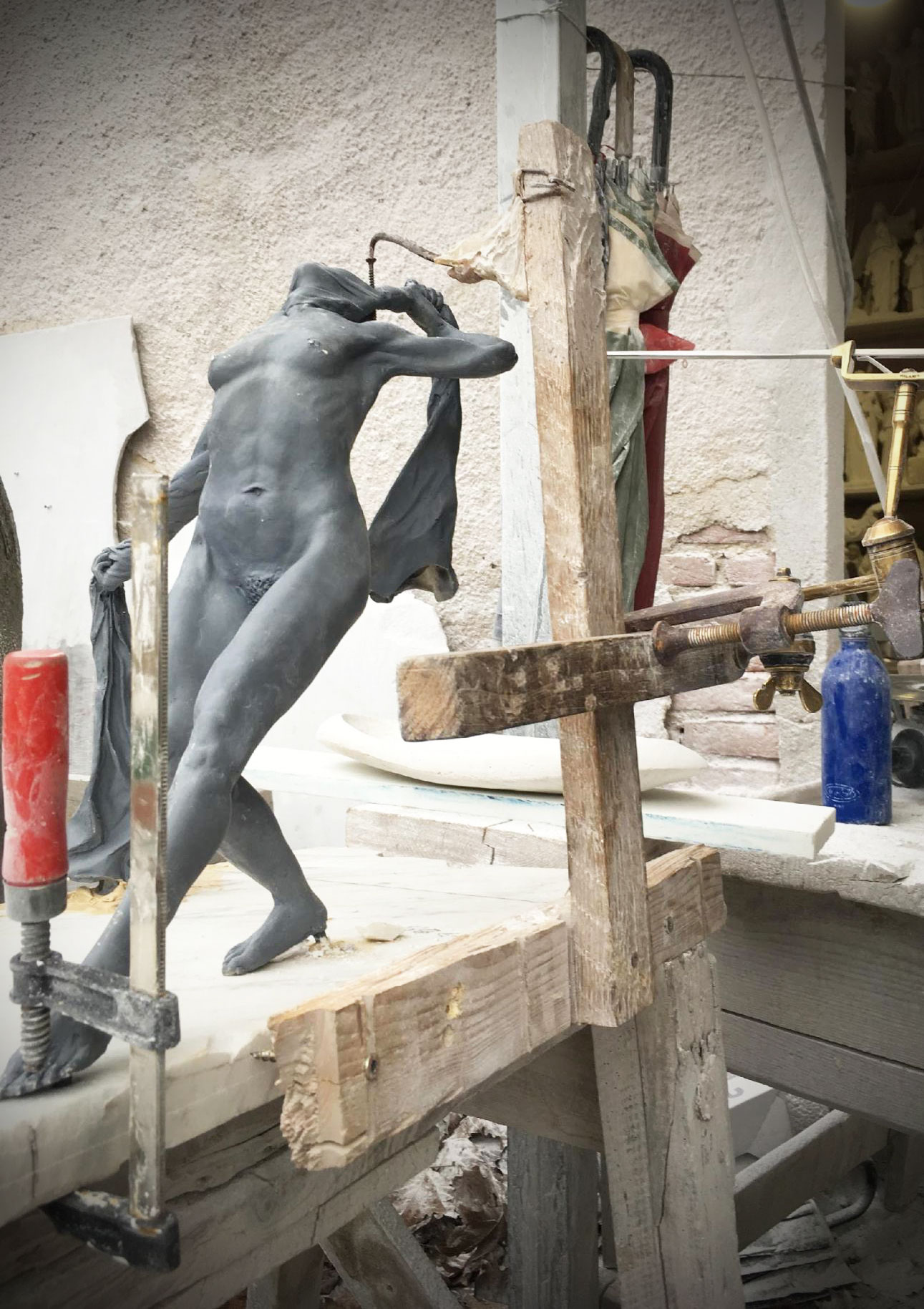
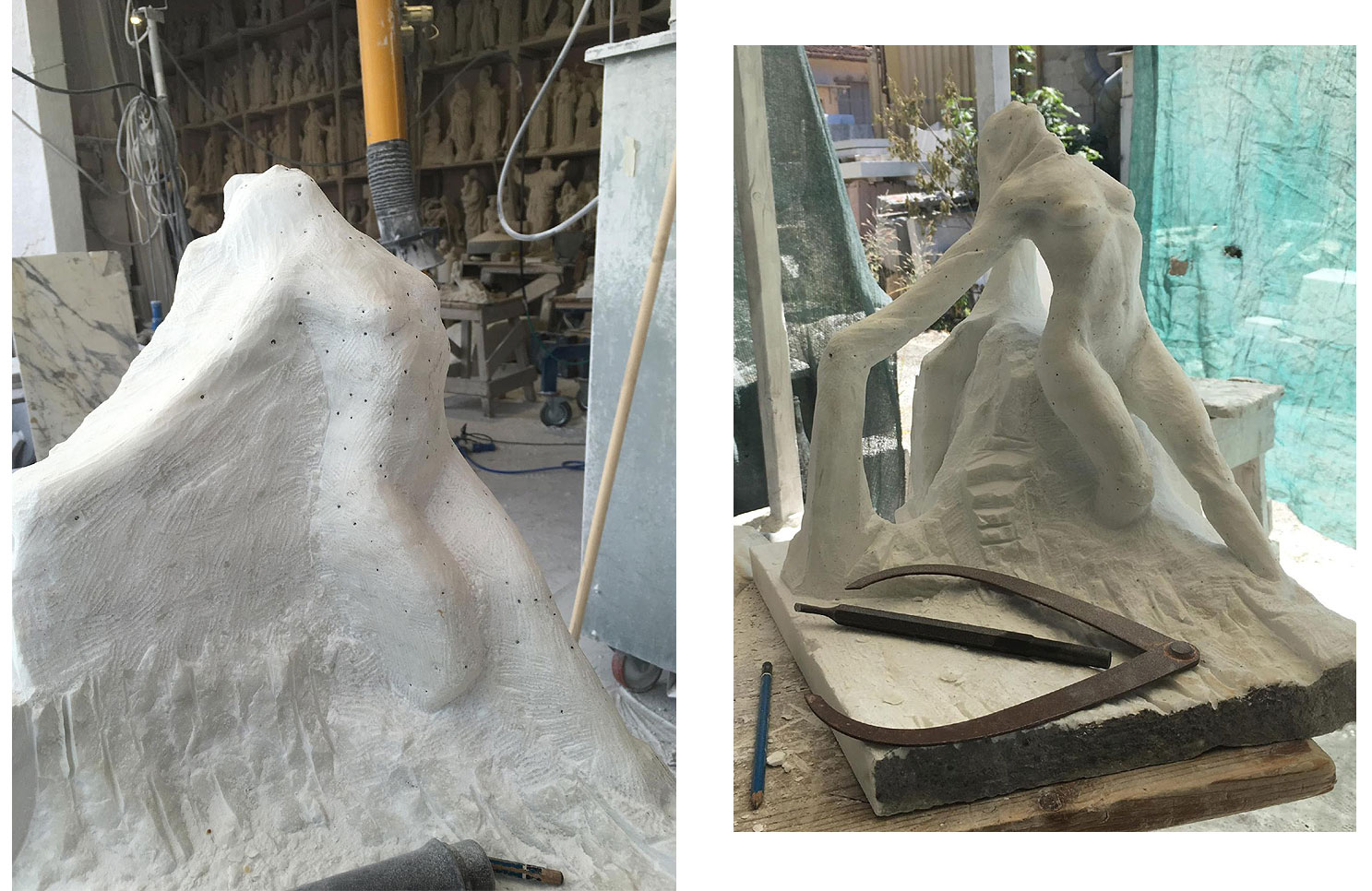
This precise process continues until the figure begins to emerge from the stone. By moving the Macchinetta around on the cross, points can be taken from every side of the sculpture. The size of the tools used depend on the amount of stone being removed. As the figure begins to emerge more visibly, smaller chisels and hammers are required, until finally small rasps reveal the final details, planes and curves.
Emergence is finished with the velvety finish of a small riffler. To achieve higher shine, stone can be hand polished with increasingly fine abrasives mixed and water.
